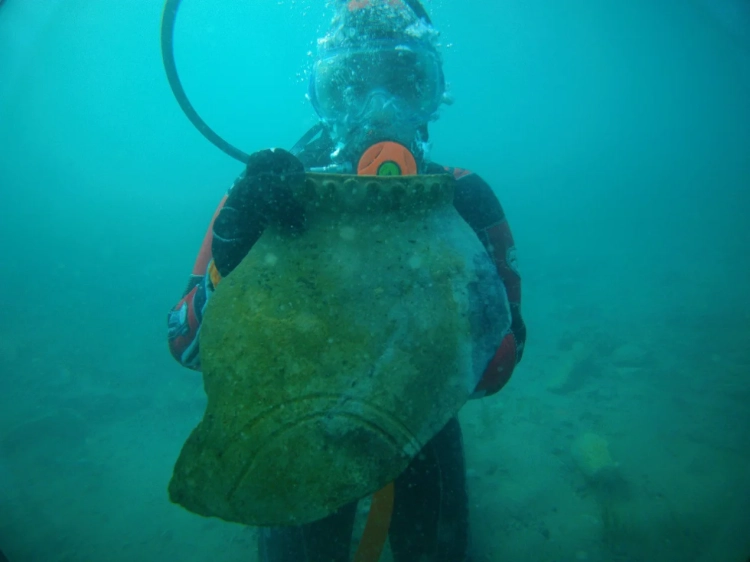In this area, there used to be a settlement, but a powerful earthquake submerged it underwater, as reported by media sources.
Recent findings are the result of an international underwater archaeological expedition conducted in the northwestern part of Lake Issyk-Kul in Kyrgyzstan.
The aim of the expedition was to investigate the submerged settlement of Toru-Ayghyr, which played an important role on the Silk Road. Scientists from the Russian Geographical Society (RGO) and the Institute of Archaeology of the Russian Academy of Sciences, together with Kyrgyz colleagues, discovered the remains of a medieval cemetery, large ceramic vessels, and fragments of buildings made of fired brick, indicating the existence of an ancient city here.
According to the RGO, archaeologists explored four sites at depths ranging from 1 to 4 meters. At the first site, the ruins of a building made of fired brick, a stone millstone, and architectural elements were found, suggesting the presence of a social building, possibly a mosque, bathhouse, or madrasah.
The hypothesis that Lake Issyk-Kul was formed as a result of an earthquake was proposed back in 1896, and only now has it been confirmed.
Underwater, the ruins of structures made of stone and wood were also observed. Samples will undergo dendrochronological analysis and AMS dating to determine their age.
Valery Kolchenko
Researcher at the Institute of History, Archaeology, and Ethnology of the National Academy of Sciences of the Kyrgyz Republic
At the second site, a Muslim necropolis from the 13th–14th centuries was discovered, which is subject to erosion from the lake. Here, burials were found that preserved traditional Islamic rituals: the skeletons were oriented with their heads to the north and faces towards the holy city of Mecca. The remains of two individuals—a man and a woman—were raised from the bottom for detailed anthropological analysis.
The third site, located south of the main complex, revealed finds of medieval ceramics, including a large vessel that archaeologists plan to extract in the next season. This was not possible this year due to the artifact being deeply embedded in the ground. Three burials were found near the vessel, indicating a complex history of this place.
To the west of the complex, researchers discovered the remains of both round and rectangular structures. Underwater drilling was conducted to collect samples of earthen walls and buried soils, which will help reconstruct the stages of the settlement's development.
Modern technologies have allowed archaeologists to accurately document the objects and create a database for monitoring the condition of the monument. The results of the season will serve as the basis for scientific publications and further research aimed at preserving the underwater heritage of Issyk-Kul.







































